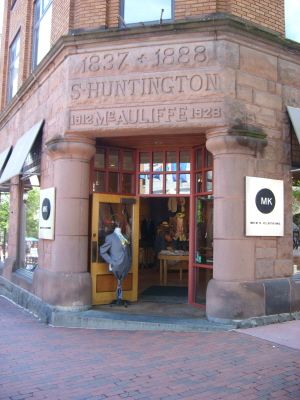The state of Vermont has many small towns and cities that are working to preserve their architectural and historic heritage. This is not only a way to preserve the character of the communities, but also a vital way to attract new businesses and investors. However, there are several factors that must be considered when evaluating the viability of such efforts.
Local initiatives
Many small towns and cities across Vermont have a rich history of architectural and historic preservation. Over 11,000 structures in the state are listed on the National Register of Historic Places. There are also dozens of locally initiated initiatives in architecture and historic preservation. Among them is a program that has been field tested over a decade in over 100 towns.
The Community Heart & Soul program engages all of a town’s residents, from children to elderly citizens. This model is a proven process that works. It uses a small budget and a team approach to bring a city together.
In the early 20th century, Bellows Falls was a thriving industrial center. As a result, a flurry of construction projects and new infrastructure shaped the town’s landscape. One such project was a railroad hub.
A more recent example of local initiatives in architecture and historic preservation involves the French Block. This was a historic downtown block in Montpelier. Located on the corner of Main and State Streets, it included a mural that was enclosed in a glass enclosure. Antiquated electrical, plumbing, exits, and a leaking roof were just a few of the issues that plagued the building. However, with the help of federal and local entities, the building was rehabilitated, bringing back 18 units that were vacant and serving low and moderate income households.
Education and preservation trades internships
Whether you are interested in the education and preservation trades or not, you may be in the market for an internship. These are the type of opportunities that will give you a leg up in the job market and help you hone your professional skills. In addition to gaining valuable work experience, you will also have a chance to network with colleagues and peers.
Several of the state’s universities offer their own unique programs. For instance, the UVM Historic Preservation Program offers graduate students the opportunity to pursue a hands-on career in historic preservation through a variety of hands-on and internship opportunities. The program is one of several programs at the University of Vermont that are dedicated to providing students with real-world training and experience.
Another program worth considering is the Virtual China Cohort, which allows students to experience the nuances of life in a Chinese city. This program also provides opportunities to learn about China’s economic and cultural history as well as participate in various social activities.
Permits for major developments
In Vermont, developers want to build market-rate housing in the near-downtown areas of towns that have zoning. To make this happen, they need permits. Currently, zoning rules are outdated and may hinder development. The state is trying to help towns by giving them grants to modernize their codes. However, the zoning code is only part of the solution to the housing crisis in Vermont.
According to the state’s latest housing report, the number of new homes built in Vermont is at a 40-year low, and could drop to a one-percent growth rate in the next few years. While the state is offering financial incentives to town planners to look at their zoning codes, developers want more predictable and efficient processes.
Act 250 is a land use regulatory program that interacts with local zoning. It gives towns a voice in major developments by requiring them to address the long-term impacts of a project, as well as the 10 criteria that must be met.
Villages and hamlets
If you’ve ever driven through Vermont, you might have noticed the state’s architectural heritage. White-spired town halls, old churches, and agricultural farmsteads stand out, bringing to mind the heritage of Vermont’s people and culture.
The preservation of Vermont’s historical heritage is a crucial part of building sustainable communities. This is especially true for older towns and cities. In order to ensure that they remain healthy, livable places, architects in Vermont are designing buildings that will not only be durable but also sustainable.
Several federal programs support historic preservation in Vermont. For instance, the National Park Service provides resources to help preserve the state’s rich architectural history. Another source of information is the Secretary of the Interior’s Standards for the Treatment of Historic Properties. These guidelines outline best practices for historic preservation and provide information on tax incentives.
Vermont’s landscape, topography, and climate also played a huge role in the design of its buildings. They had to be durable and compatible with the landscape’s undulating terrain.

